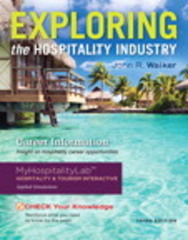Question
References - The business of childcare (5th edition) Karen Kearns Chapter 8, 9 & 12 ECA Code of Ethics (early childhood Australia) http://www.earlychildhoodaustralia.org.au/wp-content/uploads/2019/08/ECA-COE-Brochure-web-2019.pdf National quality
References -
The business of childcare (5th edition) Karen Kearns
Chapter 8, 9 & 12
ECA Code of Ethics (early childhood Australia)
http://www.earlychildhoodaustralia.org.au/wp-content/uploads/2019/08/ECA-COE-Brochure-web-2019.pdf
National quality standard (ACECQA)
https://www.acecqa.gov.au/nqf/national-quality-standard
Blue bay early learning centre philosophy
Click to download BlueBay Philosophy |
Read the scenarios and answer the related questions.
Team consensus I
It is half-way through the year and 10 of the children in each of the two preschool rooms (P1 & P2) have turned five or are almost five. Currently, around 50% of the preschool no longer require a sleep and become quite restless even when provided with individual quiet activities.
Preschool Room 1 -
- Carl (Room Leader)
- Connor (upgrading to Dip.)
- Max (Cert. 3)
Preschool Room 2 -
- Asima (Room Leader)
- Anna (Dip)
- Sarah (Cert 3)
P1 room leader Carl and P2 room leader Asima propose that the children be split into two groups - sleepers and non-sleepers. The 'non-sleepers' would consist of the older children and any other children who no longer need an afternoon sleep from both rooms. These children would be assigned to room P1 each afternoon while the children still requiring a sleep would be assigned to room P2.
It is proposed that the 'non-sleepers' be offered an intentional teaching program focusing STEM. They also argued that the proposal would provide educators with a new challenge, an opportunity to work collaboratively build new skills and knowledge.
It was proposed that each room team alternate responsibility for the STEM program on a 5-week cycle. Asima and Carl would like the program to commence in 4 weeks.
As the proposal would require the support of educators and parents, Asima and Carl take their proposal to Director Kate who agrees that it is an idea worth exploring.
Kate asks Asima and Carl to set up a meeting of the two preschool teams to discuss the proposal.
Kate volunteers to canvas parents on the proposal once the teams have agreed on a process, learning goals, an implementation strategy and an evaluation process.
Educators who immediately agree to the proposal are:
P1: Max (Cert. 3)
P2: Sarah (Cert 3)
Max and Sarah - voice the view that it will be good for all of the children. The sleepers won't be disturbed, and the non-sleepers can be engaged in challenging learning experiences.
Educators who disagree or are undecided:
P1: Connor (upgrading to Dip.)
P2: Anna (Dip.)
Anna - finds change a challenge and often become defensive when change is suggested.
Anna: 'It's all very well to say we need to focus on the children but the reality is I need time to get my documentation done. I think we need to consider our own needs. I also think that the children already do so much - they need a sleep whether they like it or not!'
Connor - he uses the time when children are sleeping to complete workplace assessment tasks for his Diploma upgrade studies.
Connor: 'I can see both sides of the argument, but I really need to use the time to get my workplace assessment tasks completed. It's the only time I have during the day.'
Asima is surprised by Connor's response as he is a hard worker and likes a challenge. She doesn't know that Connor is struggling to keep up with his studies because of family issues and really needs the time at work to get through his assessment tasks.
While expressed in different ways, both Anna and Connor are concerned that the proposal will result in less time to focus on their own work-related priorities. Connor is struggling to support the proposal because he is stressed about completing workplace assessment tasks. He is also experiencing some family issues that are compounding his stress. The response of both Anna and Connor has created a barrier to the proposal moving forward.
As Carl and Asima listen to each response - they are feeling a little disheartened as they were sure everyone would agree with their proposal.
To reach consensus Asima and Carl must first provide clarity about the proposal - the outcome they are seeking, how it will benefit the children, how it reflects the service philosophy. They must also address the barriers to consensus.
Questions
a. Explain how the outcome reflects the Blue Bay Philosophy?
b. What barriers to consensus must be acknowledged and addressed by Asima and Carl?
c. Anna states: 'I think we need to consider our own needs. I also think that the children already do so much - they need a sleep whether they like it or not!'
With reference to the ECA Code of Ethics and NQS 7.1.1., explain why Anna's response is unprofessional?
Step by Step Solution
There are 3 Steps involved in it
Step: 1

Get Instant Access to Expert-Tailored Solutions
See step-by-step solutions with expert insights and AI powered tools for academic success
Step: 2

Step: 3

Ace Your Homework with AI
Get the answers you need in no time with our AI-driven, step-by-step assistance
Get Started


